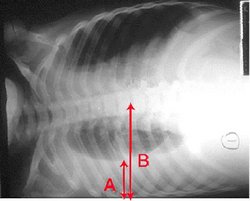PURPOSE: To describe the use of tunneled pleural catheter in the management of malignant pleural effusion in a large group of patients in a clinical setting.
METHODS: Retrospective analysis of 250 sequential tunneled pleura/ catheter insertions in patients with malignant pleural effusion in a single tertiary care center.
RESULTS: 250 tunneled pleural catheter procedures for malignant pleural effusion were performed in 223 patients (19 contralateral procedures and 8 repeat ipsilateral procedures) during a 3 year period. Symptom control was complete following 97 (38.8%) procedures, partial in 125 (50%), absent in 8 (3.2%) in addition to 11 (4.4%) failed insertions and 9 (3.6%) without assessment of symptoms at the 2 week follow-up visit. Spontaneous pleurodesis occurred following 103 (42.9%) of the 240 successful tunneled pleural catheter procedures and was more frequent when 20% or less of the hemithorax had fluid at 2 week follow-up (57.2% vs. 25.3%, p<0.001). Catheters stayed in place for a median of 56 days. Following successful catheter placement, no further ipsilateral pleural procedures were required in 90.1% of cases. Overall median survival following catheter insertion was 144 days. Complication rates were low and compared favourably with those seen with other treatment options.
CONCLUSION: Tunneled pleural catheter placement is an effective method of palliation for malignant pleural effusion which allows outpatient management and low complication rates. Tunneled pleural catheters should be considered as a first line treatment option in me management of malignant pleural effusion.
CLINICAL IMPLICATIONS: The use of tunneled pleural catheters for malignant pleural effusion is safe, simple and effective and should be considered in the palliation of this patient group.
DISCLOSURE: Gaetane Michaud, Consultant fee, speaker bureau, advisory committee, etc. Dr. Michaud received an honorarium from Denver Biomedical for speaking at the Societe des pneumonlogues de la langue francaise about the use of the Pleurx catheter for malignant pleural effusions.
Alain Tremblay MD Gaetane C. Michaud MD * University of Calgary, Calgary, AB, Canada
COPYRIGHT 2005 American College of Chest Physicians
COPYRIGHT 2005 Gale Group



